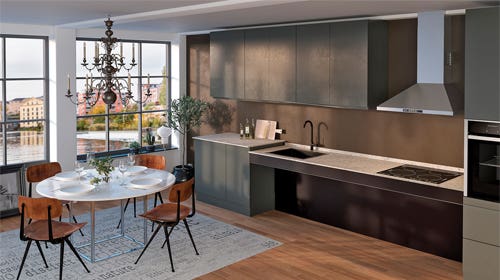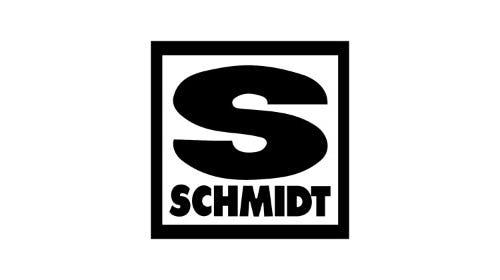Claro walnut is dramatic in color
Claro walnut has a limited growing area – California to Washington – but is highly sought after for its figure and size. It is often sold in slab form for…
Claro walnut has a limited growing area - California to Washington - but is highly sought after for its figure and size. It is often sold in slab form for table tops, sometimes in immense sizes. The wood received international recognition thanks to George Nakashima's Peace Altars and large table tops.
{loadposition position10}
"Basically it is popular for the color and the grain - the grain has more variation than the color. It is not as uniform as what the American walnut is," says Alan Zablonski, owner of Berkshire Wood Products in Sheffield, Mass. "We sell it mostly in the slab form. Sometimes we have it up to 4' wide, occasionally a bit larger, and up to 3" thick. We sell it mostly for table and bar tops, that sort of thing. Like any specialty market, it's not something you can make a living off of one species, but it is an important part of what we sell."
"Claro walnut is much more dramatic than other walnuts," says Russ Jacobson of Global Wood Source Inc. in San Jose, Calif. "It has colors in it, is typically much more figured, it has the oranges and the greens. It just has a lot more life to it than the Eastern stuff, which is kind of homogeneous and uniform in color."
One person who has made a living on claro walnut is Scot Wineland of Wineland Walnut in Chico, Calif., which is an epicenter of the wood.
"Many woodworkers first learned about claro walnut from the large furniture pieces built by George Nakashima," Wineland says. "Years and years ago, I had these big trees and he was running out of big black walnut trees, so I started supplying him with these huge slabs of absolutely gorgeous wood for his furniture and his tables. He came out here a couple of times to my place and we cut up a couple of logs for him that were just spectacular. I've got a dining room table that he made of a log that weighed 26,480 lbs."
"The origin of the term claro was first used to describe Old World walnut being grown in Spanish California, but its preferred modern usage is for the variegated wood now being harvested from grafted orchard stock," said the late Jon Arno, noted wood technologist and author, in a 2004 conversation with Woodshop News. "Wood from the lower trunk of these grafted walnuts often develops beautifully into variegated wood with dark brown and tan marbling, and this is the material usually referred to by cabinetmakers as claro."
Specialty wood dealers trace the origin of claro walnut (Juglans Hindii) to a species back when the Spaniards settled California. They brought seedlings and walnuts from Mexico and, as they established missionaries, walnut was planted as a food source and a shade tree. The word "claro" translates to "white" or "light."
Gen. John Bidwell, a pioneer, planted walnut seeds in the 1850s, most notably in Chico, Calif., where some of the trees remain standing. However, the majority of claro walnut used in woodworking today is the trunk portion of grafted orchard trees. The area where the grafting took place often displays a variegated figure. As for claro walnut's color, the description depends upon who you ask and from which tree the wood came.
"I consider nice claro walnut to have a café-au-lait color," says Myles Gilmer, owner of Gilmer Wood Co. in Portland, Ore. "We sell it in lumber form, slabs for table tops, but also a lot of smaller pieces. We sell a lot for guitar pieces. It's not the best tonewood, but people really like the appearance of the wood. It's known to be a California wood, but I've bought some stuff from as far north as Oregon and Washington that was really beautiful."
"It's something we specialize in," Zablonski says. "I'm not sure we have the most on the East Coast, but we have a fair amount; we have it in truckloads. There was a log that weighed 28,000 lbs. and we looked at, but we didn't do it because we had to get an over-width permit to ship it across the country. The cost of the log and the cost of the shipping would have been cost-prohibitive. The logs will definitely vary from tree to tree. The figure will be burly, some will be curly, you just never know for sure."
Claro walnut has colors in it that can vary from just a brown color, very similar to a black walnut, all the way to having colors such as greens, browns, grays and reds with very tight fiddleback for instruments and thousands and thousands of gunstock.
The working properties are similar to black walnut (Juglans nigra). It is very stable, works well with hand and power tools, machines well and takes a fine finish. Claro walnut has a specific gravity of .55. The drying process is laborious, usually taking two to three years.
Claro walnut trees are most plentiful in the Sacramento and San Joaquin valleys of California, where there is an abundance of topsoil and a high water table.
The cost of 4/4 claro walnut is based on its color and amount of figure. Slab prices vary dramatically, but average between $35/bf to $45/bf for highly figured material. About three dozen dealers carry claro walnut, but supply is often limited.
This article originally appeared in the September 2010 issue.







